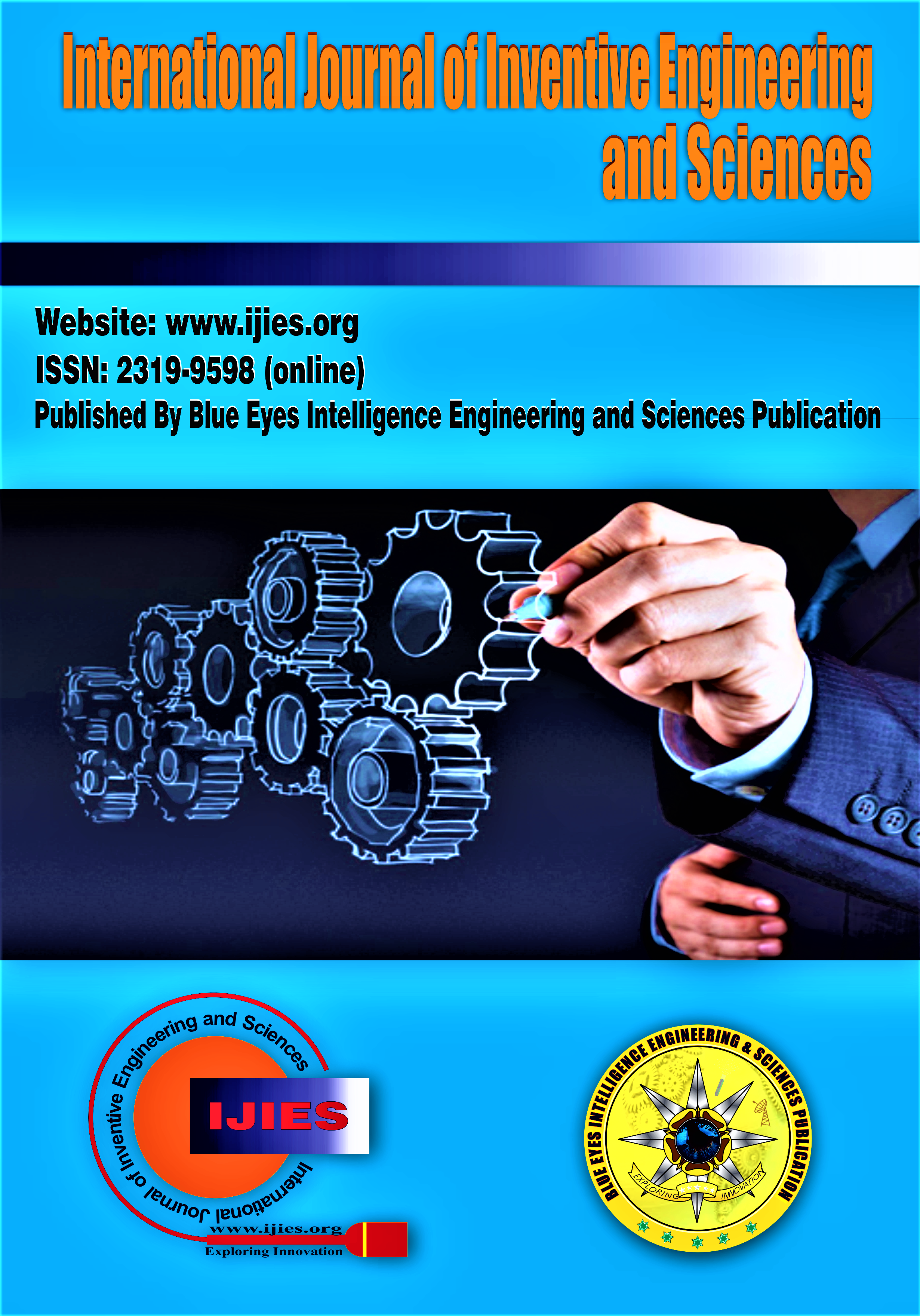Study on Environment Management Strategies of Leather Tannery Units- Punjab & Kolkata Region
Main Article Content
Abstract
This study investigates the environmental management strategies adopted by leather tannery units in Punjab and Kolkata, two major centres of India’s leather industry. Despite the sector’s significant economic contribution through exports and employment, it remains one of the 17 most polluting industries in the country, primarily due to inefficient resource utilization and inadequate waste management. The research examines the environmental implications of tanning operations, including water, air, and solid waste pollution, and evaluates the technological and policy measures introduced to mitigate these impacts. Using secondary data from government reports, industry assessments, and field-based studies, the paper analyses the effectiveness of common effluent treatment plants (CETPs), waste minimisation initiatives, and cleaner production technologies. The findings reveal that while modernisation and government-led interventions—such as the Integrated Leather Development Programme and the establishment of the Kolkata Leather Complex—have led to measurable improvements, the widespread adoption of sustainable practices remains limited due to space constraints, financial barriers, and a lack of technical expertise. The study underscores the urgent need for integrated environmental policies, advanced treatment infrastructure, and workforce training to ensure sustainable growth. By exploring both ecological challenges and progressive industry responses, this work contributes to the broader discourse on sustainable industrial development. It highlights the path forward for reconciling economic gains with environmental responsibility in India’s leather sector.
Downloads
Article Details
Section

This work is licensed under a Creative Commons Attribution-NonCommercial-NoDerivatives 4.0 International License.
How to Cite
References
J. Kanagaraj a, T. Senthilvelan a, R.C. Panda b, S. Kavitha a, 17, Eco-friendly waste management strategies for greener environment towards sustainable development in leather industry: a comprehensive review, Journal of Cleaner Production, Volume 89, 15 February 2018, Pages 1-17, DOI: https://doi.org/10.1016/j.jclepro.2018.11.013
Sumita Dixit, Ashish Yadav, Premendra D. Dwivedi, Mukul Das, Toxic hazards of the leather industry and technologies to combat the threat: a review. Journal of Cleaner Production, Volume 87, 15 January 2015, Pages 39-49, DOI: https://doi.org/10.1016/j.jclepro.2019.10.017
CPCB (Annual Report 2022-23), Annual Report, Central Pollution Control Board, Ministry of Environment & Forests, Government of India (online available at https://cpcb.nic.in/annual-report.php).
Syeedun Nisa, An In-Depth Study Of India’s Leather Industry With Special Reference To Export Prospects Of Leather Products. Published 18 April 2017, DOI: https://dx.doi.org/10.2139/ssrn.988883
Hemanathan, D.K.P., n.d. Performance Evaluation of Leather Industry in Tamil Nadu, International Journal of Food and Nutritional Sciences, Volume 11, Issue 12, Dec 2022, https://ijfans.org/uploads/paper/93ad43cedf367cbc37cadcf8e21c1f10.pdf
P. Maharaja, S. Sivashankaran, Simultaneous brine recovery and water depollution in highly saline leather industry wastewater using a united halophiles supported nano porous carbon catalyst, Journal of Cleaner Production, Volume 326, 1 December 2021, 129419,
DOI: https://doi.org/10.1016/j.jclepro.2021.129419
Fulvia Chiampo, Subramaniam Shanthakumar, Tannery: Environmental impacts and sustainable technologies, Materials Today Proceedings, available online 14 February 2023, DOI: https://doi.org/10.1016/j.matpr.2023.02.025
Ashutosh Yadav, Abhay Raj, Phytotoxicity, cytotoxicity and genotoxicity evaluation of organic and inorganic pollutants rich tannery wastewater from a Common Effluent Treatment Plant (CETP) in Unnao district, India using Vigna radiata and Allium cepa, Chemosphere, Volume 224, June 2019, Pages 324-332, DOI: https://doi.org/10.1016/j.chemosphere.2019.02.124
Geremew Liknaw, Tadesse Tekalign Kasa Guya, Impacts of Tannery Effluent on Environments and Human Health, Journal of Environment and Earth Science, ISSN 2224-3216 (Paper), ISSN 2225-0948 (Online)Vol.7, No.3, 2017, https://core.ac.uk/download/pdf/234664866.pdf
Kanij FATEMA, Md. Rayhan Sarker, Environmental Sustainability: A Challenge For Leather Industry, Leather and Footwear Journal 23 (2023) 3, DOI: https://doi.org/10.24264/lfj.23.3.6
Mohsin Taj, Nisar Ahmad Khan, An efficiency analysis of leather tanneries in India: evidence from the organized leather industry, Indian Growth and Development Review (August 2025), DOI: https://doi.org/10.1108/IGDR-01-2025-0010
Rohit Mehra, Analysis of Heavy Metals using ICP-MS in Soils around some Tannery Industries, Indian Journal of Pure & Applied Physics (IJPAP), Vol. 61 No. 6 (2023), DOI: https://doi.org/10.56042/ijpap.v61i6.2426
Éverton Hansen, Mariliz Gutterres, Environmental assessment of water, chemicals and effluents in the leather post-tanning process: A review, Environmental Impact Assessment Review, Volume 89, July 2021, 106597, DOI: https://doi.org/10.1016/j.eiar.2021.106597
Sunny Dhiman, Gunjan Mukherjee, Chapter 12 - Biotechnological approaches towards treatment and recycling of wastewater from tanneries and leather industry, Microbial Ecology of Wastewater Treatment Plants,2021, Pages 249-268,
DOI: https://doi.org/10.1016/B978-0-12-822503-5.00022-9
Sumit Kumar Verma, Prakash Chand Sharma, Current trends in solid tannery waste management, Critical Reviews in Biotechnology, Volume 43, 2023 - Issue 5, DOI: https://doi.org/10.1080/07388551.2022.206899
Bhanu Pratap Singh, Pradeep Srivastava, Overview of Textile and Leather Industries Waste Treatment Processes, International Journal of Current Microbiology and Applied Sciences,y and Applied Sciences, ISSN: 2319-7706 Volume 9 Number 12 (2020),
DOI: https://doi.org/10.20546/ijcmas.2020.912.164
Sandeep Gupta, Shivam Gupta; Sustainability strategies in the Indian leather industry: an empirical analysis, Benchmarking: An International Journal (2018) 25 (3): 797–814.DOI: htt ps://doi.org/10.1108/BIJ-06-2017-0140
Silva, V., 2021. Overview of the Leather Industry and Pollution Impact. UPjeng 7, 1–15. DOI: https://doi.org/10.24840/2183-6493_007.004_0001





